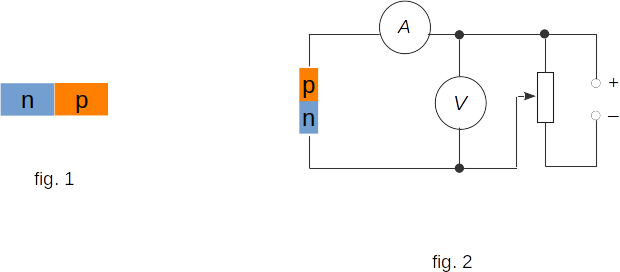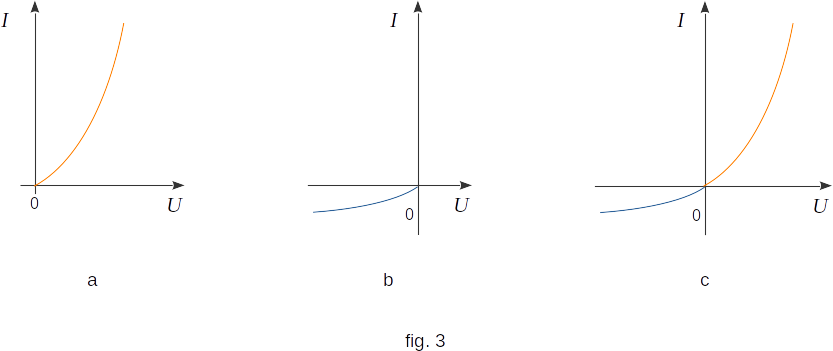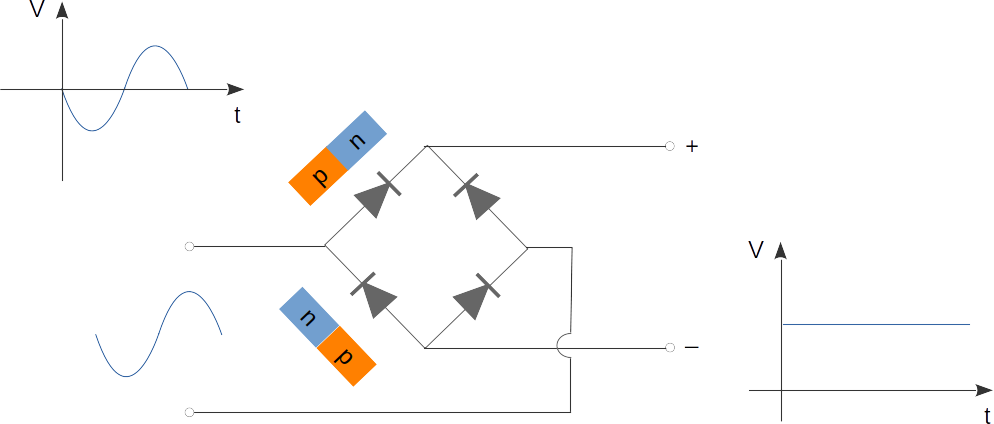From the Electrical current in different environments
117. The passage of electric current through p- and n-type semiconductor contact
Figure 1 shows a semiconductor, the left part of which contains donor impurities and therefore is an n-type semiconductor, and the right part is an acceptor impurities and is a p-type semiconductor. The contact of two semiconductors of different types is called p-n transition.
Let us include the considered semiconductor in the electric circuit (fig. 2). Let us first connect the battery so that the potential of the p-type semiconductor is positive and the n-type semiconductor is negative. In this case the current through p-n transition will be carried out by the main carriers: from the region n to the region p by electrons, and from p to n - by holes. As a consequence, the conductivity of the entire semiconductor will be high and the resistance small.

The transition considered here is called a direct. The current dependence on the potential difference - the voltamper characteristic of the direct transition - is shown in figure 3a.
Switch the battery poles. Then, at the same difference of potentials, the current in the circuit will be much smaller than in the direct transition. This is explained in the following way. The electrons now go from p to n through the contact, and the holes go from n to p. But in a semiconductor of p-type there are few free electrons, and in n-type there are few holes. Therefore, now the transition through the contact is carried out by non-main carriers, and their number is small. As a consequence, the semiconductor conductivity is small and the resistance is large. This transition is called the inverse. The voltamper characteristics of the inverse transition are shown in figure 3b. Figure 3c shows the full voltamper characteristic of the p-n transition. The diagrams shown in figures 3a, b, c give only a basic idea of the processes occurring at the contact of semiconductor types p-n. In reality, the difference between direct and inverse currents is much greater.

Therefore, the p-n transition with respect to the current is asymmetrical: in the direct way the resistance of the p-n transition is much smaller than in the inverse. This property of the p-n transition is used for rectification of alternating current.
